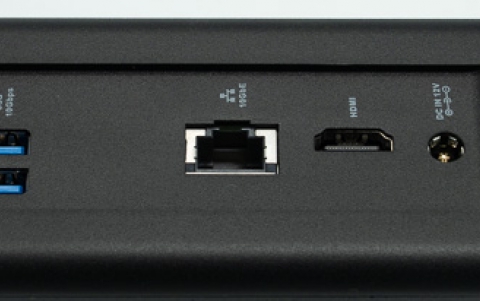
Power Efficiency Changes Moore's Law
Moore's law is a relentless task master and Keeping up with it is not so easy as it was in the past, as the chip makers are moving beyond the 32nm process.
Moore's law describes a long-term trend in the history of computing hardware, in which the number of transistors that can be placed inexpensively on an integrated circuit has doubled approximately every two years.
The 130nm generation saw aluminum interconnects replaced by copper for lower resistance. The 90nm generation used the invention of strained silicon transistors for improved performance. The 45nm generation introduced the high-k metal gate transistors for improved performance and lower leakage power. The 32nm generation provides a second generation of high-k metal gate for further improvements in performance and low power. In November of 2009 Intel started production shipments of microprocessors based on its newest 32nm generation of logic technology. And the 22nm generation isnt far behind. This means that the next generation is due in 2 years, 2011. Will the industry be able to keep up with the demanding scaling or will Moores Law change or slow down?
"We have long passed the time when new generations of transistor technology can be developed by simply shrinking vertical and horizontal dimensions, says Mark Bohr, Intel Senior Fellow. " This "traditional" form of scaling has been replaced by an era where we have to continually develop new materials and new structures to provide scaling and meet expectations for density, performance and low power, Intel's representative added.
Intel believes that Moores Law and transistor scaling are not showing any sign of slowing down, but they are showing signs of changing. Intel's 22nm technology is on track for production readiness in late 2011, according to the company.
Intels research group has a variety of novel transistor and interconnect ideas in the "pipeline" including III-V channel materials, multi-gate transistors, 3-D stacking and others. In the end, not all of the ideas explored in research make it to the manufacturing stage, but the good ones do. "The goals of scaling are changing to better meet todays market requirements. Achieving very high operating frequencies is no longer the prime target for new microprocessors. Instead, the goal has shifted to delivering higher performance combined with lower power," Bohr explained.
"Power efficiency" seems to be the main scaling goal for chips used both in small hand held devices and in large data centers.
"The goals have shifted a bit, and the technology options are very different, but the value and excitement of driving Moores Law remain undiminished," Bohr added.
Offering power-efficienct chips definitely opens the way for development of new compact and portable products, which could keep the market growing. However, it is clear that all these new research around the chip manufacturing was not enough to offer future chips that would run at faster frequencies.
To manage CPU power dissipation, processor makers favor multi-core chip designs, and software has to be written in a multi-threaded or multi-process manner to take full advantage of the hardware.
Of course, Moore's law cannot continue forever, as the transistors would eventually reach the limits of miniaturization at atomic levels. Some industry insiders believe that we have another 10 to 20 years before we reach a fundamental limit.
The 130nm generation saw aluminum interconnects replaced by copper for lower resistance. The 90nm generation used the invention of strained silicon transistors for improved performance. The 45nm generation introduced the high-k metal gate transistors for improved performance and lower leakage power. The 32nm generation provides a second generation of high-k metal gate for further improvements in performance and low power. In November of 2009 Intel started production shipments of microprocessors based on its newest 32nm generation of logic technology. And the 22nm generation isnt far behind. This means that the next generation is due in 2 years, 2011. Will the industry be able to keep up with the demanding scaling or will Moores Law change or slow down?
"We have long passed the time when new generations of transistor technology can be developed by simply shrinking vertical and horizontal dimensions, says Mark Bohr, Intel Senior Fellow. " This "traditional" form of scaling has been replaced by an era where we have to continually develop new materials and new structures to provide scaling and meet expectations for density, performance and low power, Intel's representative added.
Intel believes that Moores Law and transistor scaling are not showing any sign of slowing down, but they are showing signs of changing. Intel's 22nm technology is on track for production readiness in late 2011, according to the company.
Intels research group has a variety of novel transistor and interconnect ideas in the "pipeline" including III-V channel materials, multi-gate transistors, 3-D stacking and others. In the end, not all of the ideas explored in research make it to the manufacturing stage, but the good ones do. "The goals of scaling are changing to better meet todays market requirements. Achieving very high operating frequencies is no longer the prime target for new microprocessors. Instead, the goal has shifted to delivering higher performance combined with lower power," Bohr explained.
"Power efficiency" seems to be the main scaling goal for chips used both in small hand held devices and in large data centers.
"The goals have shifted a bit, and the technology options are very different, but the value and excitement of driving Moores Law remain undiminished," Bohr added.
Offering power-efficienct chips definitely opens the way for development of new compact and portable products, which could keep the market growing. However, it is clear that all these new research around the chip manufacturing was not enough to offer future chips that would run at faster frequencies.
To manage CPU power dissipation, processor makers favor multi-core chip designs, and software has to be written in a multi-threaded or multi-process manner to take full advantage of the hardware.
Of course, Moore's law cannot continue forever, as the transistors would eventually reach the limits of miniaturization at atomic levels. Some industry insiders believe that we have another 10 to 20 years before we reach a fundamental limit.













